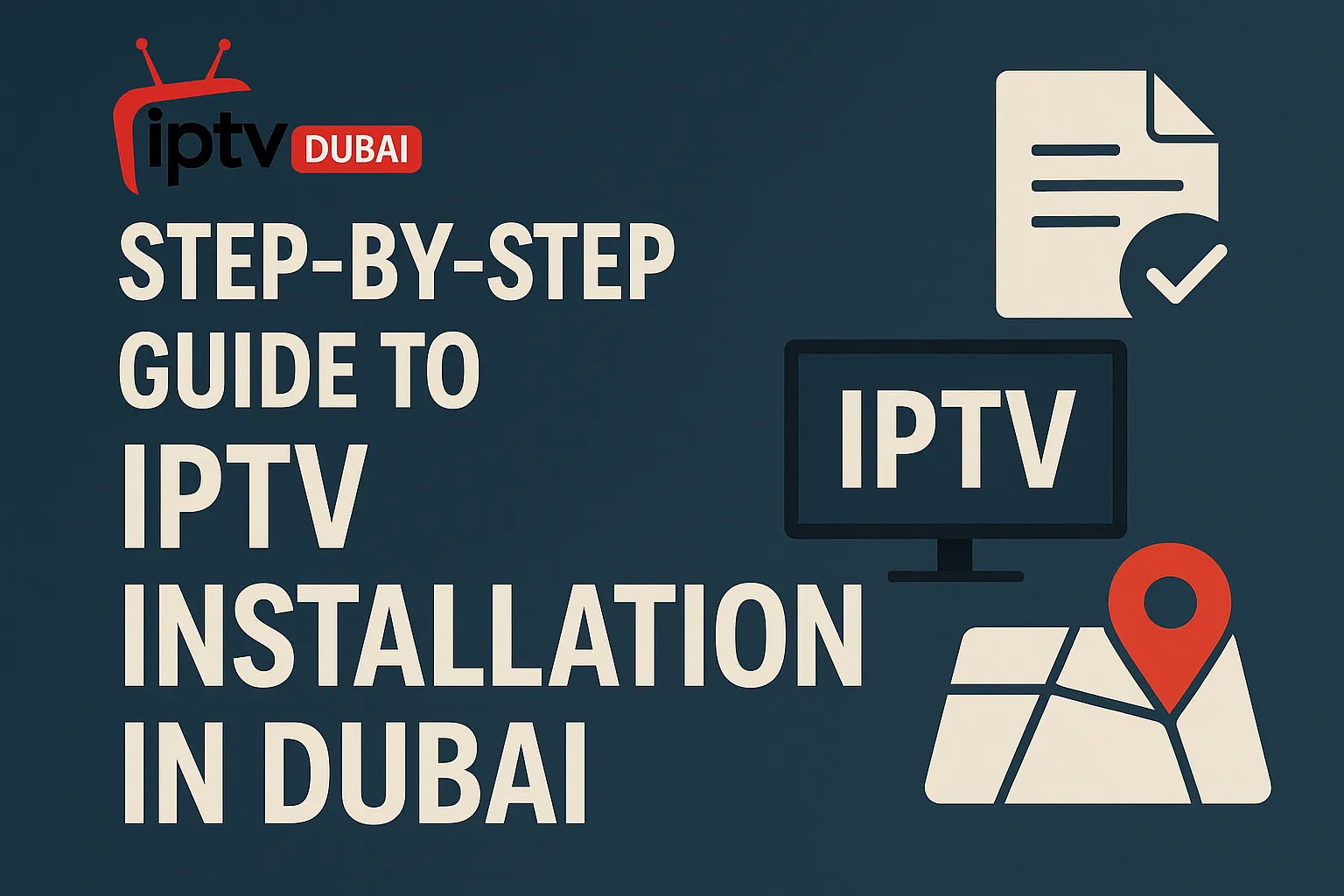Blog
Step-by-Step Guide to IPTV Installation in Dubai

Step-by-Step Guide to IPTV Installation in Dubai
Understanding IPTV and Its Benefits
IPTV (Internet Protocol Television) delivers digital TV services over IP networks, offering a reliable and feature-rich alternative to traditional cable or satellite. With a wide variety of content, seamless scalability, and support across Android devices and smart displays, IPTV systems are becoming the preferred business voice solution and entertainment delivery model in Dubai.
Assess Current Infrastructure
Conduct a Thorough Infrastructure Audit
Before installation, audit your current systems. Note all existing hardware including modems, routers, switches, coaxial cables, and endpoints like TVs and VoIP phones. Document the IP schema, physical topology, and compatibility with modern IPTV solutions.
Identify Existing Cable Topology
Understand whether your location uses a traditional copper wire system or structured cabling. This determines if additional LAN infrastructure or a transition to cloud-based hosted PBX solutions is necessary.
Deciding Between LAN and Cloud Setup
Evaluate Bandwidth Requirements
Whether using FMUSER’s LAN-based systems or hybrid cloud solutions, bandwidth is key. Streaming multiple high-resolution IPTV channels requires high-speed internet and robust internal switches.
Budget Considerations
Weigh costs between LAN setup and cloud-based IPTV. Cloud offers scalability and reduced hardware maintenance, while LAN setups offer control and potentially lower long-term costs.
Calculating Traffic Needs
Anticipate Bandwidth Bottlenecks
Estimate the number of concurrent streams, video resolution (HD, 4K), and peak viewing times. High traffic loads can slow down even high-speed connections.
Tools for Traffic Analysis
Use tools like NetFlow analyzers or Powershell modules to simulate network traffic, calculate data flow, and predict weak spots in the topology.
Managing HDMI-CEC Issues
Standardize Room Configurations
Avoid custom setups across multiple displays. Consistent configurations reduce troubleshooting time and simplify updates.
Disable HDMI-CEC for Stability
Many IPTV issues stem from HDMI-CEC (Consumer Electronics Control) interfering with remote commands. Disabling CEC ensures stable, uninterrupted input switching.
Choosing the Right IPTV Solution
Overview of FMUSER’s Solutions
FMUSER offers LAN-based IPTV systems ideal for businesses, schools, and hospitality sectors. These are tailored to deliver high-resolution streaming with minimal lag and easy content management.
Dedicated IPTV Servers vs. Hybrid Systems
A dedicated IPTV server offers more control and performance but may require more technical expertise. Hybrid systems balance flexibility and ease of use, ideal for business VoIP solutions or mobility-driven deployments.
Installation Steps
Setting Up Network Hardware
Install switches, patch panels, access points, and cabling based on your infrastructure plan. Ensure all hardware supports Gigabit or faster speeds for optimal streaming.
Configuring IPTV Software
Deploy IPTV middleware on servers or cloud instances. Integrate with content delivery networks, Electronic Program Guides (EPG), and user management systems like the Grandstream Device Management System.
Testing and Troubleshooting
Before going live, test stream stability, user authentication, remote access, and device compatibility. Identify and resolve latency, jitter, or packet loss issues.
Enhancing Viewer Experience
User Interface Optimization
Design a clean, intuitive interface that supports remote control access and mobile navigation. Customizable menus and language settings improve usability.
Content Management Strategies
Implement content libraries with on-demand options, blockbusters, business media, and live TV. Use advanced scheduling and segmentation to tailor offerings for varied audiences.
Final Note
Whether deploying IPTV for residential or commercial use, a structured step-by-step approach ensures a reliable, future-proof communications and entertainment system. By choosing the right setup—cloud or LAN—you can offer high-quality streaming experiences that scale with your needs and adapt to evolving digital standards in Dubai.



















